Browse our Growing Library of Success Stories
By:
William McDonald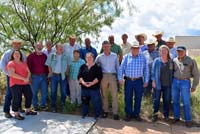 The Malpai Borderlands Group is a grassroots, landowner-driven organization that is implementing cooperative ecosystem management on almost one million acres of virtually unfragmented landscape in southeastern Arizona and southwestern New Mexico along the Mexican border. The area has been called a “working wilderness”.
The Malpai Borderlands Group is a grassroots, landowner-driven organization that is implementing cooperative ecosystem management on almost one million acres of virtually unfragmented landscape in southeastern Arizona and southwestern New Mexico along the Mexican border. The area has been called a “working wilderness”.
https://www.landcan.org/success/Malpai-Borderlands-Group/3516/
By:
K. Gregg Elliott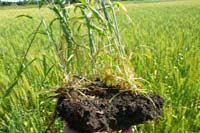 The nonprofit Soil Health Academy (SHA) is just one of many initiatives spawned by regenerative agriculture guru Gabe Brown in collaboration with additional expert partners. SHA holds regenerative agriculture workshops around the country that are open to anyone who’s interested, and they are routinely sold out.
The nonprofit Soil Health Academy (SHA) is just one of many initiatives spawned by regenerative agriculture guru Gabe Brown in collaboration with additional expert partners. SHA holds regenerative agriculture workshops around the country that are open to anyone who’s interested, and they are routinely sold out.
https://www.landcan.org/success/The-Roots-of-the-General-Mills-Regenerative-Agriculture-Program/3550/
By:
Steve Stuebner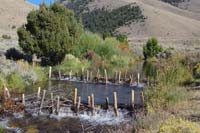 Landowners and conservation professionals are excited about a new type of woody structure that mimics beaver dams. The benefits are similar – they store water, slow down runoff in streams, and enhance fish and wildlife habitat. They’re called Beaver Dam Analogs or BDA’s for short.
Landowners and conservation professionals are excited about a new type of woody structure that mimics beaver dams. The benefits are similar – they store water, slow down runoff in streams, and enhance fish and wildlife habitat. They’re called Beaver Dam Analogs or BDA’s for short.
https://www.landcan.org/success/Beaver-Dam-Analogs-catching-on-in-Idaho/3552/
By:
Steve Stuebner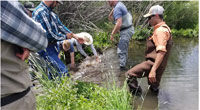 The Commission’s two-year grant-funded project to restore wet meadows in southern Idaho benefiting sage grouse and wildlife habitat, due to conclude in June 2020, has already exceeded most of its deliverables. Partners and landowners and are pleased.
The Commission’s two-year grant-funded project to restore wet meadows in southern Idaho benefiting sage grouse and wildlife habitat, due to conclude in June 2020, has already exceeded most of its deliverables. Partners and landowners and are pleased.
https://www.landcan.org/success/Sagebrush-Landscape-Restoration-Project-A-Boon-To-Working-Lands/3553/
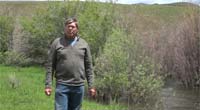 Conservation professionals turned a negative into a positive in the aftermath of the 65,000-acre Sharps wildfire on Baugh Creek in the Little Wood watershed in Central Idaho.
Conservation professionals turned a negative into a positive in the aftermath of the 65,000-acre Sharps wildfire on Baugh Creek in the Little Wood watershed in Central Idaho.
https://www.landcan.org/success/Restoring-streams-postfire-with-lowtech-structures-in-Idaho/3592/
By:
Leopold Conservation Award Program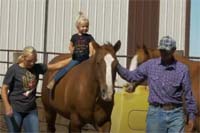 Learn about how Kerry's family beef cattle ranch operates in a constant state of adaption and innovation, thanks to his careful observation, openness to new perspectives, and ability to work with researchers and nature.
Learn about how Kerry's family beef cattle ranch operates in a constant state of adaption and innovation, thanks to his careful observation, openness to new perspectives, and ability to work with researchers and nature.
https://www.landcan.org/success/Kerry-Dockter-believes-youre-never-too-old-to-learn/3608/
By:
Gregg Elliott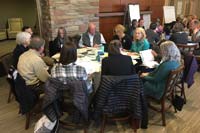 When Heather Dutton, fresh out of undergraduate school at the Warner College of Natural Resources and graduate school in the College of Agriculture at Colorado State University, began her first job working for a non-profit river restoration organization in the San Luis Valley, she was thrilled. She also felt confident that her technical training in restoration ecology had prepared her for the challenges she’d soon be facing.
When Heather Dutton, fresh out of undergraduate school at the Warner College of Natural Resources and graduate school in the College of Agriculture at Colorado State University, began her first job working for a non-profit river restoration organization in the San Luis Valley, she was thrilled. She also felt confident that her technical training in restoration ecology had prepared her for the challenges she’d soon be facing.
Heather was in for a surprise.
https://www.landcan.org/success/When-Conservation-Happens-Collaboratively/3523/
By:
Steve Stuebner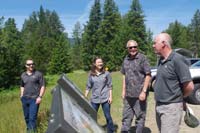 Ten years in the making, the objective of the project was to keep “working forests working,” while knitting together checkboard-ownership of private lands with state endowment trust lands to provide open space for moose, elk, deer and bears to travel a between the Cabinet Mountains to the east and the Selkirk Mountains to the west via a narrow valley, known as the “Purcell Trench,” surrounding the McArthur Lake WMA.
Ten years in the making, the objective of the project was to keep “working forests working,” while knitting together checkboard-ownership of private lands with state endowment trust lands to provide open space for moose, elk, deer and bears to travel a between the Cabinet Mountains to the east and the Selkirk Mountains to the west via a narrow valley, known as the “Purcell Trench,” surrounding the McArthur Lake WMA.
https://www.landcan.org/success/McArthur-Lake-Forest-Legacy-Easement/3617/
By:
Leopold Conservation Award Program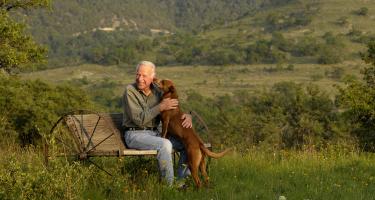 J. David Bamberger’s Selah, Bamberger Ranch Preserve stands as a motivating symbol of the power of private landowner conservation.
J. David Bamberger’s Selah, Bamberger Ranch Preserve stands as a motivating symbol of the power of private landowner conservation.
https://www.landcan.org/success/Selah-Bamberger-Ranch-Preserve/3410/
By:
Leopold Conservation Award Program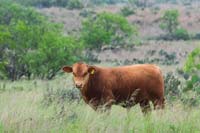 Land stewardship is about balance. If a ranch is managed solely for the purpose of grazing cattle, the rest of its ecosystem falls out of balance. Hugh Fitzsimons Jr. embraced a more holistic approach at his San Pedro Ranch in the 1970s. He believed if you improved native habitat, the ecosystem would not only lead to more wildlife, but to healthier livestock.
Land stewardship is about balance. If a ranch is managed solely for the purpose of grazing cattle, the rest of its ecosystem falls out of balance. Hugh Fitzsimons Jr. embraced a more holistic approach at his San Pedro Ranch in the 1970s. He believed if you improved native habitat, the ecosystem would not only lead to more wildlife, but to healthier livestock.
https://www.landcan.org/success/San-Pedro-Ranch/3714/
By:
Mark Davis, USFWS Public Affairs Specialist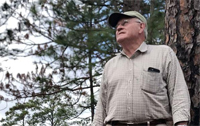 Georgia landowner Charley Tarver committed to helping the endangered red-cockaded woodpecker. Joe Burnam, a biologist with the Georgia Department of Natural Resources (DNR) credits Tarver, and the DNR’s Safe Harbor Agreement, with creating a healthy environment for the birds.
Georgia landowner Charley Tarver committed to helping the endangered red-cockaded woodpecker. Joe Burnam, a biologist with the Georgia Department of Natural Resources (DNR) credits Tarver, and the DNR’s Safe Harbor Agreement, with creating a healthy environment for the birds.
https://www.landcan.org/success/Safe-harbor-for-woodpeckers/3702/
By:
Phil Kloer, USFWS Public Affairs Specialist Across the country, golf courses are converting acreage to monarch butterfly habitat. The USGA helps fund Monarchs in the Rough, an Audubon International project to establish monarch habitats on American golf courses.
Across the country, golf courses are converting acreage to monarch butterfly habitat. The USGA helps fund Monarchs in the Rough, an Audubon International project to establish monarch habitats on American golf courses.
https://www.landcan.org/success/Teeing-up-conservation/3701/
By:
Natural Resources Conservation Service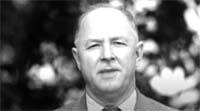 This video is the story of a young scientist, Hugh Hammond Bennett, who recognized 80 years ago that the United States was at risk of losing it’s most important resource – its soil. He made it his mission to change the trajectory of agriculture at a time of great crisis and to provide farmers and ranchers with the information and tools they needed to be sustainable.
This video is the story of a young scientist, Hugh Hammond Bennett, who recognized 80 years ago that the United States was at risk of losing it’s most important resource – its soil. He made it his mission to change the trajectory of agriculture at a time of great crisis and to provide farmers and ranchers with the information and tools they needed to be sustainable.
This 21 minute video is the story of the conservation movement that Hugh Hammond Bennett began and includes interesting insights into the policies and structures that he set up that we continue to rely on today. His work revealed so much of what we’re rediscovering and renaming as “regenerative agriculture.”
https://www.landcan.org/success/Hugh-Hammond-Bennett-The-Story-of-Americas-Private-Lands-Conservation-Movement/3642/
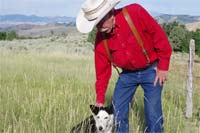 This is a neat story about dreams coming true. Preston, Idaho rancher Jay Wilde had a dream of restoring beaver to Birch Creek on his cattle ranch near Preston in Southeast Idaho. He tried to restore beaver on his own nickle, but they didn't stay. Jay eventually reached out to Joe Wheaton, a watershed scientist at Utah State University, who helped him solve the puzzle. See how Jay worked with Wheaton and Nick Bouwes from Utah State and Anabranch Solutions to introduce beaver successfully with a science-based plan and low-tech woody structures to create deep-water habitat for beavers.
This is a neat story about dreams coming true. Preston, Idaho rancher Jay Wilde had a dream of restoring beaver to Birch Creek on his cattle ranch near Preston in Southeast Idaho. He tried to restore beaver on his own nickle, but they didn't stay. Jay eventually reached out to Joe Wheaton, a watershed scientist at Utah State University, who helped him solve the puzzle. See how Jay worked with Wheaton and Nick Bouwes from Utah State and Anabranch Solutions to introduce beaver successfully with a science-based plan and low-tech woody structures to create deep-water habitat for beavers.
https://www.landcan.org/success/Rancher-Jay-Wilde-realizes-longtime-dream-of-bringing-beaver-back-to-Birch-Creek/3641/
By:
Ted Williams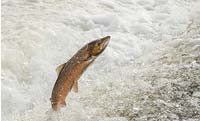 Unlike most New England rivers, the East Machias River never quite lost its salmon. Every fall, a small remnant population swam upstream, against waters that tumble and curl 36 miles from Crawford Lake to the coast, through balsam-scented boreal forest where moose splash and eastern coyotes sing. The Downeast Salmon Federation’s weathered, cedar-shingled Peter Gray Hatchery sits along the bank, just below a narrow stretch of rapids that empties into the river’s wide, flat tidal reaches.
Unlike most New England rivers, the East Machias River never quite lost its salmon. Every fall, a small remnant population swam upstream, against waters that tumble and curl 36 miles from Crawford Lake to the coast, through balsam-scented boreal forest where moose splash and eastern coyotes sing. The Downeast Salmon Federation’s weathered, cedar-shingled Peter Gray Hatchery sits along the bank, just below a narrow stretch of rapids that empties into the river’s wide, flat tidal reaches.
https://www.landcan.org/success/The-Experimental-Method-That-Might-Just-Save-Maines-Salmon/3620/
By:
Steve Stuebner Pine Street Woods opened to great fanfare last autumn. Now the Sandpoint community has a new outdoor space for walking, biking, cross country skiing, connecting with nature and learning about sustainable land management.
Pine Street Woods opened to great fanfare last autumn. Now the Sandpoint community has a new outdoor space for walking, biking, cross country skiing, connecting with nature and learning about sustainable land management.
“We were passionate about this – the idea of having a piece of nature close in, for our entire community to come out and explore, and play, recreate and learn,” said Katie Egland Cox, Executive Director of the Kaniksu Land Trust.
https://www.landcan.org/success/Kaniksu-Land-Trust-creates-Pine-Street-Woods/3619/
By:
Steve Stuebner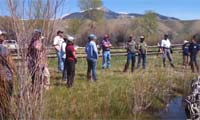 See how Lemhi ranchers and conservation professionals work together to achieve a number of milestones related to fish and wildlife habitat, water conservation, minimum stream flows, winter fish survival and more through careful advance planning, respect for multiple uses, and a clear focus on conservation and community goals.
See how Lemhi ranchers and conservation professionals work together to achieve a number of milestones related to fish and wildlife habitat, water conservation, minimum stream flows, winter fish survival and more through careful advance planning, respect for multiple uses, and a clear focus on conservation and community goals.
https://www.landcan.org/success/Lemhi-Ranchers-enhance-fish-habitat-via-25year-harmonious-partnership/3616/
By:
Washington Policy Center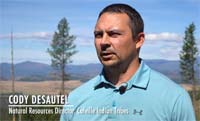 This video from Washington Policy Center with cooperation from the Confederated Tribes of the Colville Reservation, sheds light on how the tribes manage forests to be more healthy using commercial harvests, thinnings, and controlled burns to deal with the pressures of insect infestation, climate change, and decades of fire suppression.
This video from Washington Policy Center with cooperation from the Confederated Tribes of the Colville Reservation, sheds light on how the tribes manage forests to be more healthy using commercial harvests, thinnings, and controlled burns to deal with the pressures of insect infestation, climate change, and decades of fire suppression.
https://www.landcan.org/success/Healthy-and-FireResilient-Forests-with-the-Confederated-Tribes-of-the-Colville-Reservation/3614/
By:
Steve Stuebner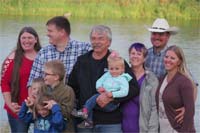 Before knowing much about land trusts, Ashton farmer John Nedrow thought they were some kind of sinister force seeking to take over his farm and force landowners off their property.
Before knowing much about land trusts, Ashton farmer John Nedrow thought they were some kind of sinister force seeking to take over his farm and force landowners off their property.
“Back then, I thought they were the enemy,” Nedrow said in an interview on his alfalfa and malt-barley farm, which straddles the banks of the famed Henrys Fork River, a blue-ribbon trout stream. “I thought they wanted to turn this whole area into national park.”
https://www.landcan.org/success/John-Nedrow-is-a-big-believer-in-conservation-easements--they-saved-his-family-farm/3613/
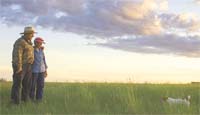 Their introduction to holistic ranch management techniques called into question long-held, traditional ways of thinking. The drastic changes that followed required a leap of faith for the fourth-generation ranchers. They traded harvesting hay for grazing methods that let their cattle harvest the forage themselves. Such changes didn’t happen overnight, and each came with its own risk and learning curve.
Their introduction to holistic ranch management techniques called into question long-held, traditional ways of thinking. The drastic changes that followed required a leap of faith for the fourth-generation ranchers. They traded harvesting hay for grazing methods that let their cattle harvest the forage themselves. Such changes didn’t happen overnight, and each came with its own risk and learning curve.
https://www.landcan.org/success/Craig-and-Conni-French-always-considered-themselves-good-land-stewards/3609/
 Sign In
Sign In
 Sign In
Sign In
